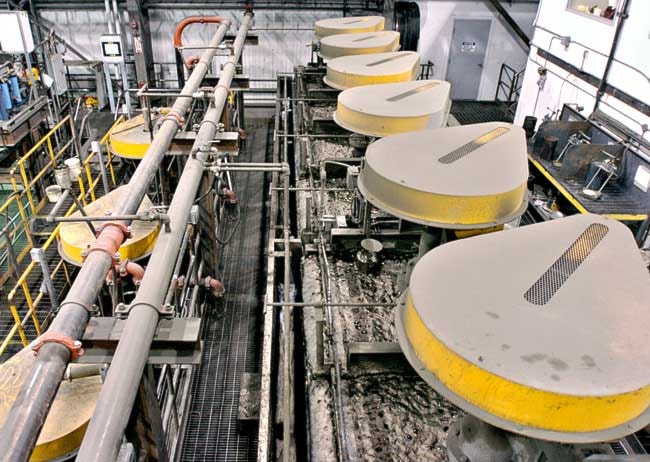Golden Predator Corporation caused a stir late last month when it gobbled up every single mining exploration tag for sale in the territory.
By purchasing a total of 70,000 tags from the four regional offices of the Yukon Mining Recorder, the company effectively blocked its competitors from staking new ground - at least, for a short while.
Within several days, the territorial government had come up with a workaround, by allowing exploration companies to stake claims the old-fashioned way, by pounding stakes with hand-written notes attached.
This will prove pricey for any companies that had to resort to this measure, because later they will have to return to the same claims to properly tag their stakes. In many cases, that means another helicopter flight.
Golden Predator’s chair and CEO, William Sheriff, said if his company hadn’t cleaned out the mining recorder’s office, someone else would have.
“We figured there was a good likelihood that someone would get caught flat-footed. We didn’t want to be that person.”
The enormous tag purchase should ensure Golden Predator is “set for the year,” said Sheriff. “Maybe a little bit beyond that.”
The very thought of a staking rush in the dead of winter would have seemed highly unlikely not long ago. But exploration companies aren’t waiting for the ground to thaw, as usual, when the Yukon is caught up in the biggest exploration boom in at least a half century.
“Right now you can’t get a staking crew,” said Sheriff. “It’s almost impossible to get a helicopter. This summer is going to be completely crazy.”
Most exploration is focussed around two areas: the White Gold District near Dawson City and the Rau property near Keno City. Sheriff won’t say where his company is staking ground.
“Where? The Yukon. I hate to be a smartass, but I really can’t say at the moment,” he said. “Suffice to say it’s in two or three different places.”
This is an industry, after all, that’s so secretive it’s not uncommon for contracted helicopter pilots to have no idea where they’ll be flying until their engines are powered up.
Sheriff wasn’t bothered by the thought of his competitors facing delays for lack of tags. But then he heard - incorrectly, as it turned out - that it would be several months, rather than weeks, before new tags arrived.
“Then I felt bad. I even made an overture to the government to arrange to give them back if they had a better scheme so someone couldn’t buy them all.”
That was never needed. The mining recorder ran out of tags January 31. A new batch arrived three days later, on February 3.
Sheriff knows he won’t be thanked for this, but he notes that it’s better that he caused the stir when he did - rather than during the summer, when exploration activity is in full swing.
“They did need a better scheme. I could of ordered 1 million tags, and that still wouldn’t have been prohibitively expensive,” he said. Each claim costs $2.
“Two million bucks for an entry for a company is nothing. There was a flaw in the system. We weren’t doing it to make them make a new rule, but I’m glad they did.”
Glenna Southwick is a veteran of the Whitehorse mining recorder office, having worked there for three decades. She remembers when business would come to a crawl during the winter. Not any more.
In recent weeks she’s seen at least 17 people crowded at the front counter of the office, inside the Elijah Smith Building.
And, when the new batch of tags arrived, she found a handful of determined men waiting outside the building early in the morning - well before the building was open to the public, but, as they knew, shortly before Southwick would arrive at work.
Exploration workers know Southwick is a gatekeeper, so they do their best to keep her and her staff happy. It’s not uncommon for an applicant to arrive with a tray of coffees and a box of donuts - insurance to keep themselves in the staff’s good books.
Applicants arrive with everything from hand-scrawled maps to GPS co-ordinates.
The flood of new claims means the mining recorder’s staff struggles to keep the maps on their website up to date. They upload new maps every day, but they still can’t keep up.
In 2010, a little more than 83,000 quartz claims were staked. That’s up from 15,000 in 2009.
In December alone, more than 4,000 quartz claims were registered in Whitehorse. Nearly 7,500 claims were registered territory-wide.
The number of quartz claims in the Mayo District has quadrupled since 1998, when Trevor Ellis, the region’s mining recorder, began his job.
In the Whitehorse District, there are currently 45,000 quartz claims in good standing. There were less than 16,000 in 2007.
The total number of quartz claims in the territory is just shy of 160,000.
To put this all in historical perspective, the Klondike gold rush of 1898 resulted in approximately 17,000 claims staked.
Contact John Thompson at
johnt@yukon-news.com.
